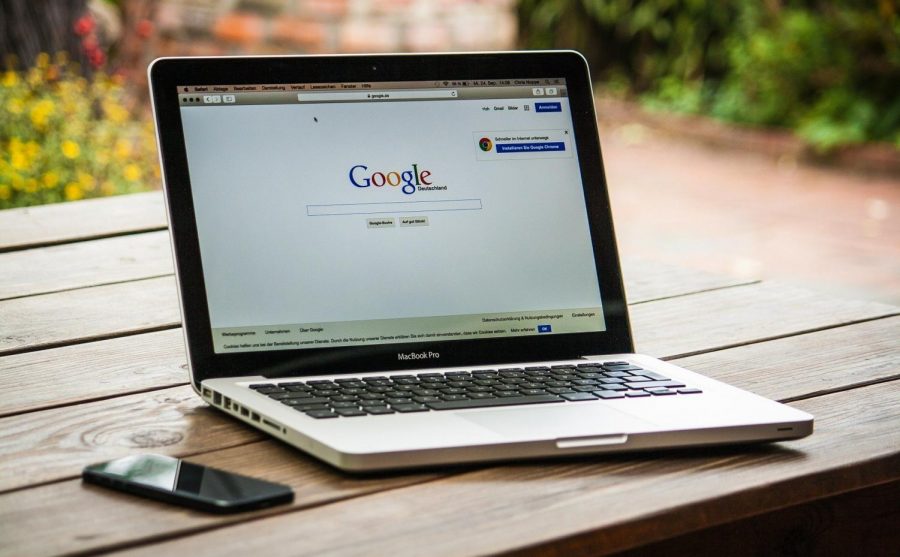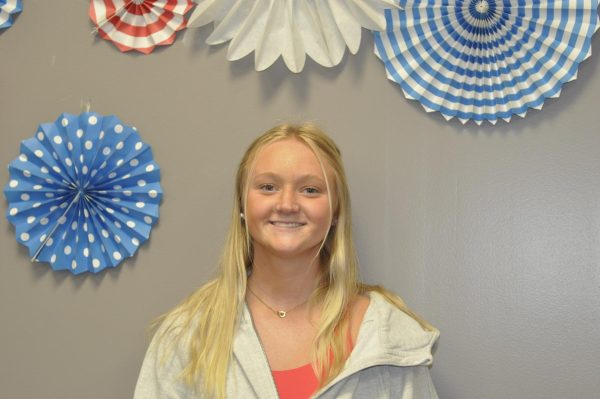Students And Teachers Alike Adjust To Remote Learning
While teachers struggle to make connections and make content enjoyable, students struggle to keep up.
October 28, 2020
Online school is a new experience for teachers and students alike. Everyone is going through the common experience of adjusting to the differences between in-person and online school, as well as the problems that accompany that transition.
Because of online school, junior Skylar McLean has had a more difficult time keeping up with her workload and has had to adjust her work schedule.
“I am usually doing school all day till late at night,” McLean said. “Whereas when we were in school, we had better communication with our teachers, and we had more free time once we got home.”
Many have changed their work habits to better suit an online setting. Some students, such as sophomore Jacob Given, rely on the individual work-time in between classes to finish assignments and keep up with work. Other students have relied more on extra studying or keeping themselves organized to keep up with their classes.
Senior Hailey Metcalf is one of these students, but how she keeps everything in order now differs from her normal routine.
“My efforts to keep up with my online work usually are maintained through keeping myself very organized and by putting assignments in my calendar, whereas in person I would’ve logged them in a journal,” Metcalf said.
Whether it is reminding themselves of why they took the classes in the first place, or it is keeping themselves busy through other activities, many students are having to take extra steps to keep their morale high.
For junior Parker Bowman, he keeps his spirits up through personal rewards.
“I try to take breaks between classes just to leave my desk. I’ve started treating myself to a coffee or milkshake when I have a long school day, much to the disappointment of my bank account,” Bowman said.
Students aren’t alone in feeling the effects of remote learning. Teachers have also had to adapt to teaching in a different setting and are facing their own set of unique problems.
One of the differences that Physical Education teacher Brian Lesh has noticed is the volume during class. He finds it’s much quieter now that the students aren’t physically in front of him. However, he still does his best to keep things the same as they would be in person.
For chemistry teacher Tara Wojciechowski, she has had to adjust how she teaches her curriculum, including creating more PowerPoint presentations where she’d normally use hard copies and embedding more visuals into her lessons.
Wojciechowski still makes efforts to let her own personality shine through during online school.
“I would normally be patting students on the back, punching them in the arm, squirting the mist out of orange peels in the room and burning things in front of their faces,” Wojciechowski said. “I try just as much to be who I am without those things and encourage them to be who they are — if only through the chat box.”
Although some aspects of virtual learning have been easier than others to adapt to, a number have led to difficulties for teachers. One of these difficulties is created through students not turning on their cameras.
“It’s tough teaching to a bunch of icons,” Lesh said. “When my students are not physically sitting in front of me, it’s tough to know that they aren’t playing Mario Kart, sleeping or a number of other distracting factors.”
Just like students, teachers also have strategies to keep their own morales up. For Wojciechowski upholding her daily routine was important. Through having fun, watching the sunrise, drinking coffee, attempting challenges and forgiving herself for any mistakes, she finds the silver lining during these times.
Lesh has a similar way of staying positive and continues to do the activities he enjoys.
“If you’re in town, you’ll see me out on an afternoon run. I also spend plenty of time picking on my guitar,” Lesh said. “Looking forward to those rewards helps keep me balanced and motivated to educate my students to the best of my ability.”
A major change in school this year is how teachers are presenting the material. For some students, they are frustrated with how their teachers are assigning material and preparing them for tests.
McLean is one of these students, and she finds it hard to deal with how some of the material in her classes are given.
“Our teachers post many notes and PowerPoints, but it is the same information just repeated, and it becomes hard to sift through everything online when it isn’t organized,” McLean said.
For junior Hannah Bogart, she feels that her teachers have done a good job to prepare her for upcoming exams and have put in extra effort to ensure she does well.
“We have done multiple timed assessments, just like the ones we will see on the exams,” Bogart said. “To further prepare myself, I’d say I am pushing myself as hard as I can to be able to complete the timed assessments.”
Remote learning has not only affected how the material is given to students, but also how students and teachers are communicating. Students can no longer just go to a teacher’s classroom to ask questions or get help and are now relying on other methods.
“You have to be willing to speak up, ask questions through email or arrange meetings with teachers after school,” Bowman said. “Most of the teachers are very understanding about your struggles and are willing to work with you.”
Students are also making efforts to stay connected with their friends in other ways now that they are no longer seeing them every day in school.
Senior Tyler Wachter has kept in contact with his friends through calls and online games.
“I stay connected with my peers through Google Meets and have recently been playing Among Us on Discord with them quite often,” Wachter said.
Senior Julia Conn has a different approach to staying connected with her friends.
“Sometimes we get together to do our classes together, and we often text in our group chat,” Conn said. “It’s definitely a big change, but I know that it’s a far safer method to learn online and we will be back soon.”



